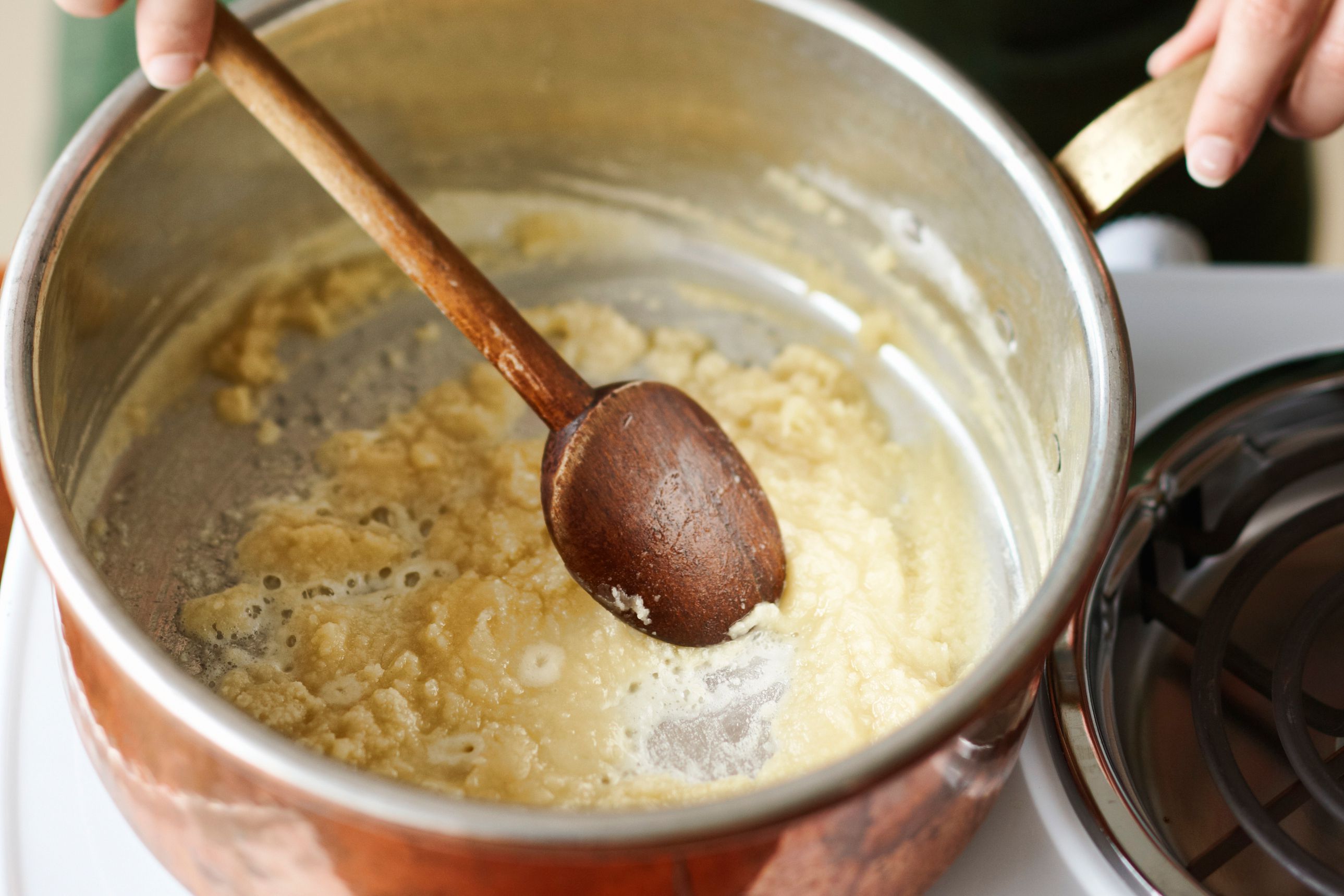Fat + Flour + Heat Equals Roux
TEXARKANA, Ark. –
If you have made gumbo from scratch, chances are you have made a roux, pronounced roo. A roux is made with fat, flour, heat, and time. It is the most important aspect of gumbo. Without a roux, there is no gumbo. It is considered as a building block of Cajun and Creole cuisine. It is both a seasoning and a thickener, and the longer a roux is cooked, the darker and more flavorful it becomes.
Cajun or Creole roux is basically interchangeable. For the fat, you may make the adaptation of using bacon fat or lard in place of butter. Creole brown roux is cooked more than the French brown roux that you might use in a demi-glace. It is used as a thickener, but because it is cooked longer, it does add some flavor.
It is with Cajun cooking that roux really comes into its own. Cajun brown roux is made with lard, vegetable oils, bacon fat and even duck fat. Cajun roux can be from light brown to a very deep, dark, nutty brown. Roux is used in Cajun cuisine for flavor rather than for thickening. When the roux is cooked to a dark brown, it loses much of its thickening power, but gains a rich, deep nutty flavor. This dark brown, nutty roux is the basis for many classic Cajun dishes, adding a unique richness and depth. It is the secret ingredient in Cajun food.
I mentioned earlier that to make a roux you need fat, flour, heat and time. Here is where these items come into play.
Your first step is to choose the fat you wish to use. Almost any fat will do, from butter to oil to animal fat such as chicken or even duck fat if you have it. You want to use a heavy Dutch oven or cast-iron skillet, and heat your fat of choice over medium heat. Here is the tricky part; there are really no set measurements. Making a roux is really more about “feel.” Start with any amount of fat; I usually start with a cup. You will need to add an equal amount of flour in the next step.
Once your fat is melted, add your all purpose flour. Do not make a roux with self-rising. The baking soda will cause it to foam and can cause it to boil out of the pan. Add as much flour to the skillet as you did fat, so if you added a one-cup fat, add one-cup flour. Here is where you get some exercise, whisk the flour into the fat until you have a smooth, thick sauce. If it is too thick to whisk, add a little more fat. If it is too thin, add more flour. It really is all about “feel.” As a general guide: a medium-brown roux will take 15–30 minutes to develop its coppery brown hue and nutty taste and aroma. On the other hand, a deep dark-brown roux looks like dark melted chocolate. Dark roux is essential in building the flavor of traditional gumbo and usually achieves its color within 30 to 45 minutes of cooking, but it depends on the amount you make as well as the heat you use to cook it.
Watch it carefully and whisk constantly. Failure to do so can result in a burnt roux that has to be discarded and started over. In fact, if you see black specs, your roux has burned, and you have to start over. No one wants a burnt roux as the base of their gumbo or other dish. Keep whisking until you get it to the desired texture and deep brown color used in most gumbo dishes.
Now that you have your roux, you can make that wonderful pot of gumbo. Making a pot of gumbo is simple, and is no more complicated than making stew. You have done the most complicated part when you made your roux, everything else is a breeze.
For more information, contact the Miller County Extension Office, 870-779-3609 or visit us in room 215 at the Miller County Courthouse. We're online at chadley@uada.edu, on Facebook at UAEXMillerCountyFCS/CarlaHaleyHadley, on Twitter @MillerCountyFCS or on the web at uaex.uada.edu/Miller.
By Carla Haley-Hadley
County Extension Agent - FCS
The Cooperative Extension Service
U of A System Division of Agriculture
Media Contact: Carla Haley-Hadley
County Extension Agent - FCS
U of A Division of Agriculture
Cooperative Extension Service
400 Laurel Street, Suite 215 Texarkana AR 71854
(870) 779-3609
chadley@uada.edu
The Arkansas Cooperative Extension Service is an equal opportunity institution. If
you require a reasonable accommodation to participate or need materials in another
format, please contact your County Extension office (or other appropriate office)
as soon as possible. Dial 711 for Arkansas Relay.
Pursuant to 7 CFR § 15.3, the University of Arkansas System Division of Agriculture
offers all its Extension and Research programs and services (including employment)
without regard to race, color, sex, national origin, religion, age, disability, marital
or veteran status, genetic information, sexual preference, pregnancy or any other
legally protected status, and is an equal opportunity institution.
